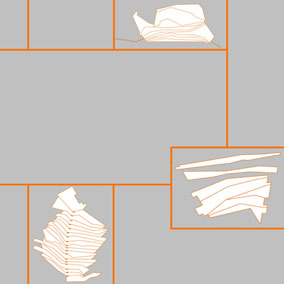

The selected area is located at Attiki, and it is a 36 acre district, of 51m altitude difference, that belongs to municipality of Galatsi. Its main characteristics are the educational and trade uses, whereas inside the boundaries of the site there are high school buildings. The south- west limits of the site constitute habitable area.
Because of the fact that the specific district was used as a quarry in the past, there are some points of great inclination, to which access is difficult, or sometimes impossible. There area six entrances to the site. The area’s size is important because of its two main characteristics; great extension and altitude difference, therefore it offers an excellent view, and is not far away from the centre of the city.
The proposal concerns the creation of an entertainment park, where the interest is focused on a walk, in combination with the panoramic view. The site under study, despite the fact that is located at the centre of the area, has the possibility to be distanced and overview the city. That’s why the related distance of the walker to the ground is interesting and each time varies. Sometimes he walks on the ground and sometimes in it.
In relation to the above, specific points of the area were selected and depending on their strategic place, the main uses were created.
Afterwards, an amphitheatre, paths and station points were created, which constitute the connection link between the existent condition and the proposed one, where the walk takes place on the ground level. Then the paths that connect the station points were designed.
Finally, the main building is suggested, which is located beyond the ground level. In the building, artistic projections take place, including video art and video projections, and it is connected to the store rooms, where the projection file is.
Supervisor: Antonas Aristide
Reference Number: 47
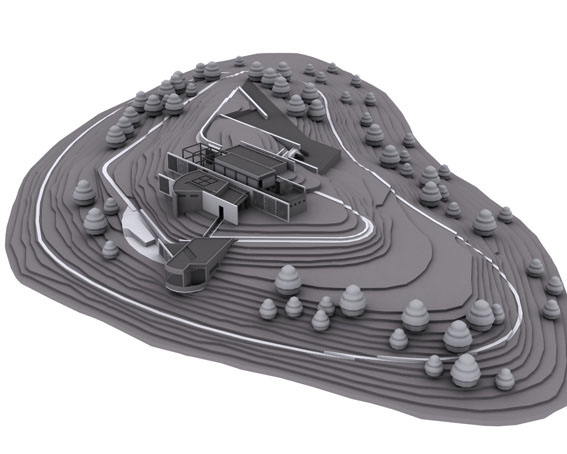

The subject of this thesis is the proposal of an observatory building group as well as a refreshment stand in mountainous region of Kastoria. The organization of the building and the configuration of the environment space, are the main concerns of the proposal. Elements that influenced the study are the incorporation of the most modern technological applications as well as the harmonisation with the particular character of the region.
However, in order to create guiding lines that they will help the study of the observatory, a reference of the achieved targets of the building should be done. To this direction the first thing to be mentioned is the protection of bodies of observation as well as the general mechanical equipment. The ergonomic design and the insurance of comfort for the observer are certainly required. Climate and ground’s configuration in the region play a fundamental role in the choice of locality for the observatory’s construction. It is necessary to ensure the good visibility of the sky. At the same time, a building like this should be away from sources of artificial lights.
The bulging should be adapted to the microclimatic conditions of the surroundings, with a great consideration to the construction materials. The building is supposed to acquire the exterior temperature as rapidly as possible, while simultaneously the observer should be protected from unfavourable meteorological conditions. The materials of the construction should not influence the atmosphere around the building.
Finally, one of the studied subjects is also the form that the observatory is supposed to have, in order to combine the functionalism and the facility of manufacture. The ways that the building’s roof is removed are important, as it concerns the entire roof to one direction or its individual parts.
This version of rolling roof has been selected in the study. The space of observation has rectangular provision and the roof rolls on two parallel joists. The logic of parallel joists determined the general provision of the entire building group. Rectangular levels are placed in parallel. Between them linear “walls” exist. A sidelong way crosses the entire group. It begins from the parking and leads to the refreshment stand cutting the parallel lines that defines the buildings with the “walls”. The proposal is completed by two curved corridors in the perimeter of the building group.
Supervisor: Triantafillidis Giorgos
Reference Number: 32


The consumption of food for the human kind was always constituted as an essential and integral part of everyday life. It concerns a basic biological need of each person, in order to insure survival. The cover, however, of this need does not exist through simple habit or routine, but is invested with various symbolic dimensions. For all the cultures, the consumption of food was not only biological fact, but it was constituted also as a powerful mean of expression and maintenance of ideologies and perceptions.
However, the treatment of food (cooking) has been assimilated with the place of kitchen; on the other hand, kitchen is usually placed in an isolated and sterilized place in the house.
This diplomatic work re-defines the substance of kitchen, approaches the relation between cooking and architecture, and it is concretely researched if architecture can be shaped through the cooking technique.
The project focuses in small scale, functions in direct relation with human body and it is shaped by that. It concerns a collective happening, a cooking performance, which is carried out not by an isolated person, but by a team.
Thus, is been created an object, portable, that obeys in the terms of cooking, and functions out of the strict and particular limits of house. It is moved in the city, while it is used as a type of urban, but also and domestic game.
Besides, are examined all the stages of treatment and consumption of food, while is re-defined the provision of departments of a "usual" kitchen. The pieces of the particular object are composed, like cooking, from users themselves. The portable kitchen is exempted from the tedious consuming luxuries, covering the basic operations and uses of corresponding place.
It has created a manufacture, an outdoor stage, where actors are users themselves. They are participating in a common preparation of food, but also in a kind of "performance" and game, that sets cooking a social and public ritual event.
Supervisor: Giannisi Phoebe
Reference Number: 38


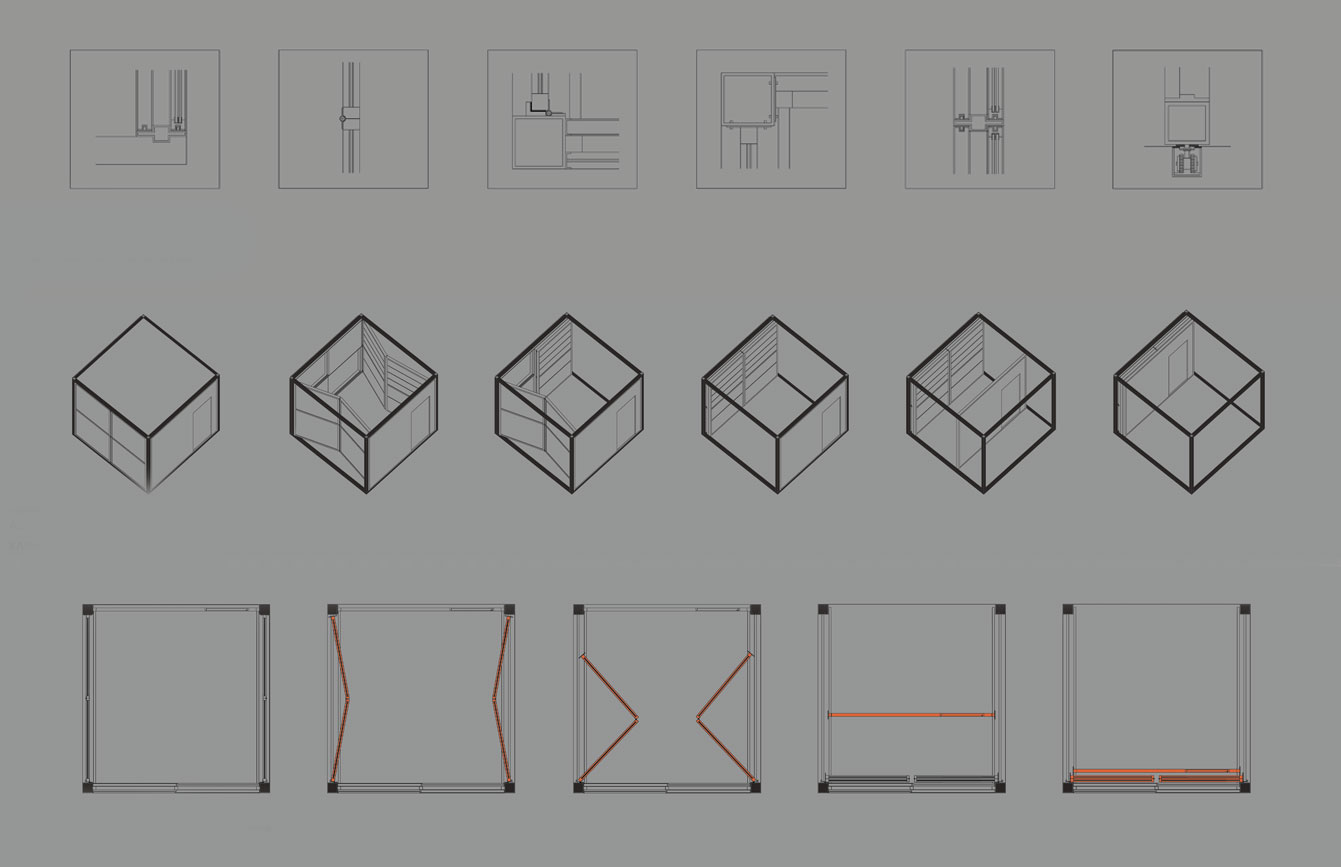

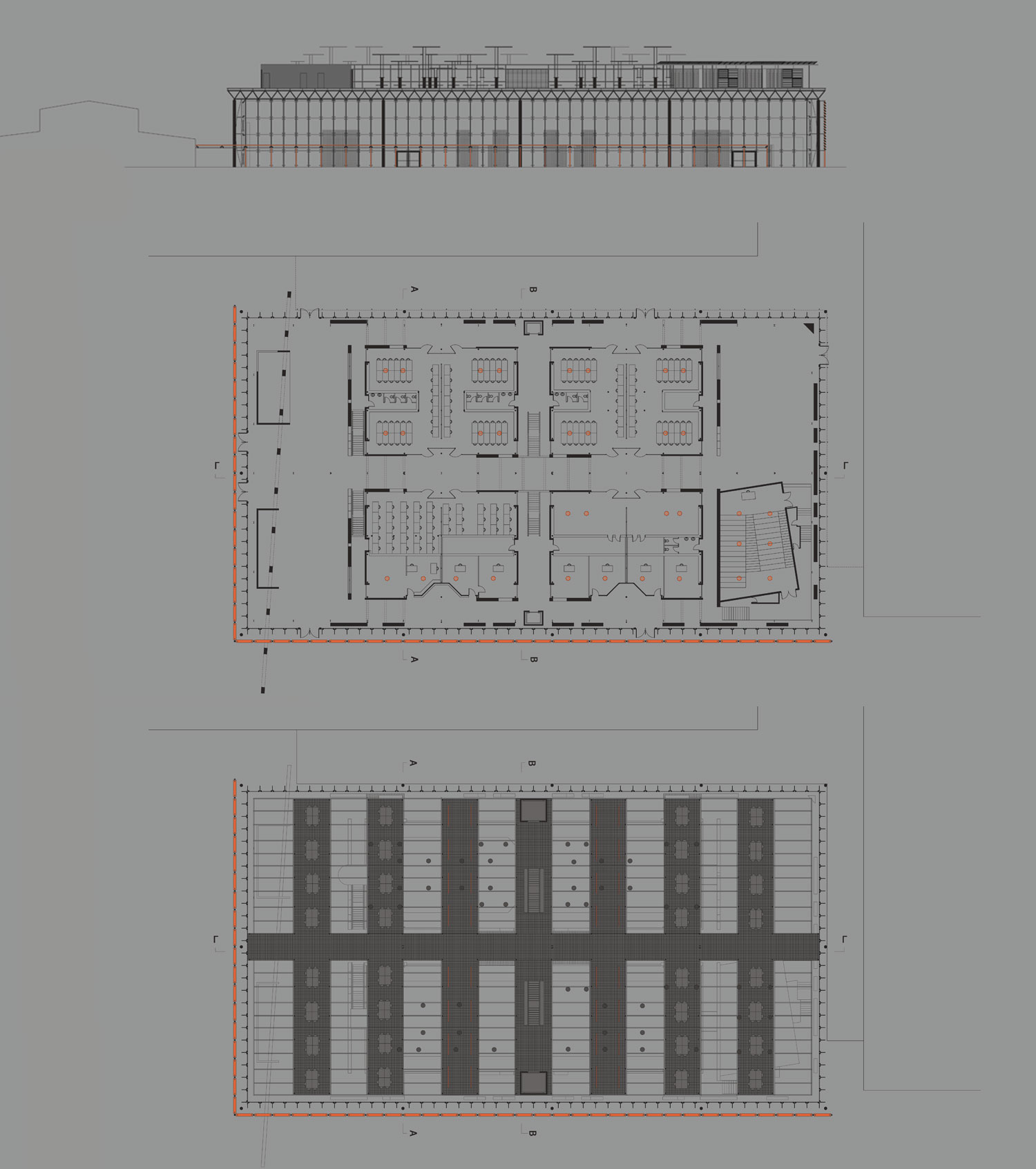







The project concerns the desighn of a new shell at the existing building of the architectural department of the University ofThessaly. Our aim is to produce a new identity that would fit the most the character of the school, without however suppressing the existing building. The building is maintained, the trace of the old shell remains and we add the new one above this. The variability, the creativity and more generally the evolution of life we considered to be the main characteristics of an architectural school. Through thiw project we have tried to convert these characteristics into top guality space design, while we attempted to coserve and strengthen the element of transparency so that the building reflects the life that is included in this.
We wanted to attribute the variability through an interactive relation between the building and the user. That is the reason why the interventions are not just parts of static constructions. They have a dynamic character since they can transform depending on the mood and the needwsof the users.
Moreover the existing building as well as the new shell are suseptible of energy analysis so that we can create better living standards for the users.
The proposal results in a progressive range from the existing building to the new shell and the interventions devide the bulding into three notional units that interchange in the verticl axis.
Supervisors: Papadopoulos Spiros, Vrontissi Maria, Tsangrassoulis Aris
Reference Number: 22
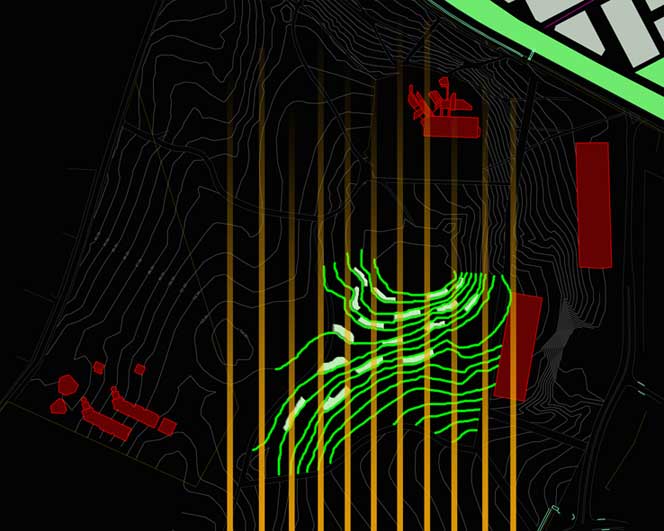

The subject of the diplomatic project deals with the bioclimatic design of students’ houses of the Medicine school of University of Thessaly in Larissa. This proposal was faced as an act which interferes with landscape and, at the same time, as a solution with the less possible environmental impact of use of these buildings.
The Medicine School of University of Thessaly, which until the previous year was located in the centre of Larissa, now moves to an area out of urban plan which abuts on the Peripheral University General Hospital of Larissa, an area named as Mezourlo. There are about 300 students in this school. At the area where it moves, there is an intense presence of natural landscape, mostly through the ground relief.
The basic design principles had to do with a search for a way of installation, form and way of function which could utilize the ground relief, the south orientation of the area and the climatic characteristics in order the buildings to incorporate with the natural landscape and decrease their energy demand.
So, there were developed about seven models of houses which were located on a linear axis parallel to the ground hypsometrical curves of the area. Vertically to these curves and between houses, there were located spaces with glass boundaries where the solar energy is operated for buildings’ heating. In addition to this, the houses’ openings were designed to have south orientation for the development of solar gains inside. The openings were examined in such a way which could provide the natural ventilation of building during summer.
According to the projects, groups of one-storey houses were developed on a parallel to the ground relief axis and were covered with a planted roof, with an aim to be embodied in the landscape and to be better and naturally insulated.
There was made a survey regarding the wall insulation of every house of the project. According to the results and principles such as the material economy, one of the best solutions was the insulation of 6cm polystyrene with an air cavity of 2 cm for the external walls.
The basic heating system of every group of houses consists of solar collectors which are located on the planted roof with south orientation. There, the water is heated and then it is stored in a water tank which is buried in the ground behind the north side of the group. It is estimated that this system covers up to the 60% of the energy demand for heating of every house model.
As was mentioned previously, a common space with glass boundaries on the north and south side was designed for every couple of houses. Inside this construction, solar rays worm the air. The air, with mechanical support, passes through the floor which is made of paraffin, a Phase Changing Material. There, the heat is stored. During daytime, the air in the “green house” is recycled continuously through pipes. During night, the inside air of the two houses, passes through melted paraffin, becomes warmer and returns through pipes to the house. With an opening which to the green house (on the common wall) the house is filled with air again.
During summer, these spaces “break”, as the glass walls can be folded. In this way, they become common roofed yards for the users.
The openings which are installed on the south side of every group are shaded with a hang as the roof extends beyond the limits of every house. It has the appropriate dimensions in order to shade the openings during summer but not to prevent solar gains during winter. There is an extra construction of simple fabric shadings located to the exterior south area of every house.
At last, during summer, the entrance of fresh cool air is achieved through linear small openings on the north side of the building and a scooped out piece of ground behind of every house.
Supervisors: Trova Vasso, Tsangrassoulis Aris
Reference Number: 35


This study is concerned with the analysis and restoration of a fortified building known as the Metochi, which is situated at a distance of only a few metres from the village of Maroulas near Rethymno. It can be assumed that the building’s history started towards the end of the Venetian occupation (17th century). The buildings of that period have not yet been evaluated to a satisfying degree, with the result that there has practically not been any protection at all (particularly in Crete). Its architecture represents the local society of previous centuries, which was exclusively dependent on the production of oil due to the favourable position of the settlement at the foot of the olive groves.
The Metochi consists of two levels. The groundfloor hosts all the spaces for storage, the stables and the oil factory. The entire upper floor was used as residental space. Because of the large degree of destruction, the exact use of each space cannot be determined. However, we can distinguish the "hamam" and the Turkish bath. Since the records do not refer to any data concerning this building, we had to rely on both our observations on the site and the comparison of this building with other examples of which data are known. The fact is that the architectural stages of the building cover the entire period of the Turkish presence on the island. Today, the general picture of the Metochi is that of bad preservation. The first signs of negligence appeared in 1924, when refugees from Asia Minor took over the building. The new inhabitants did not have the financial means to proceed to a methodical preservation. This situation worsened after the southern part of the building was bombed during World War II, which inflicted great damage. However, despite the misfortune this building suffered, the static framework of the remaining parts is in a considerably good condition.
The suggestion of re-using the building includes the establishment of a cafe/ restaurant on the ground floor, while the upper floor can be used as a guesthouse. This seemed to be the best feasible and suitable solution after having taken into consideration both the analysis and the use of buildings in the settlement of today. Since the initial use of the spaces cannot be proved, the interior partition of the spaces will take place based on their new function, while at the same time efforts will be made to maintain those spaces, the former use of which could be determined. The fortified character of the complex does not allow for any important architectural interventions. Thus we have decided to realize a moderate reconstruction of the destroyed parts, which will vary as little as possible from the preserved parts. The exterior spaces will be given the necessary shape in order to allow access, while the outdoor space of the restaurant is provided at the south east side.
Supervisor: Theologidou Cleopatra
Reference Number: 53
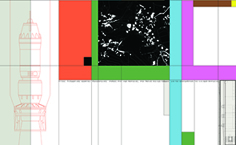

The concept of this project, aims to present an installation in nature, whose function will be connected with it, combined and will finally produce a space, which is to harmonise with the environment as much functionally as formally. A hydroelectric power station with the parallel operation of a small dam and the configuration of a path, which by bursting into a natural space, claims place, not that much with the size ,but with its structure and function. Specific interventions, which expect to create pauses in continuous, natural landscape and alternate the roles of functional and formal dependence and independence from the natural structure.
Supervisor: Triantafillidis Giorgos
Reference Number: 30
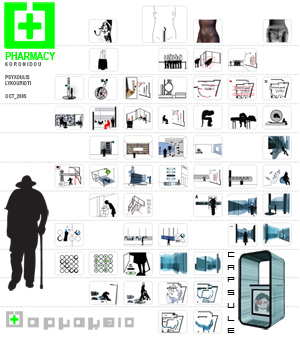

The project’s objective is the design of a drugstore in the city of Volos. The basic principle is fused on the position that the design thought is constituted and rephrased in the area of design media. The project is separated in two distinguishable design phases, which correspond in the development of the concept in architectural space:
1) In the diary diagrams and
2) In the special application of diary’s open ideas in the
selected building plot.
The first phase is defined as the design result of the analytic and
Synthetic management:
a) of basic ideas, which are related to the examination of drugstore program,
v) attributes of social space: the boundary among
public and private character of
commercial space,
c) of references in forms, which are activated through the examination of the program.
In the first phase, the medium of design, is mainly based, on the mapping, using photographic material of people’ s local action in existing drugstores and furthermore the synthetic processing of data using the program illustrator.
In the second phase, the open ideas of diagrams are checked through their application of data of the existing envelope, which is selected for the store accommodation. The final form of space design elements accrues only through their dimensioning.
Application
The drugstore is placed on the ground floor of existing store, 116 m2, which belongs to a five floor building on Koumoundourou and Orpheus St corner. The objective of this project is to create a drugstore, which will functions dynamically in the direct urban space.
The pattern of capsule form is generalized as a morphological choice
in store design, constituting a symbolic report in the pharmaceutical preparation and its administration in the human body, aiming to remedy.
Supervisors: Psychoulis Alexandros, Lykourioti Iris
Reference Number: 45

